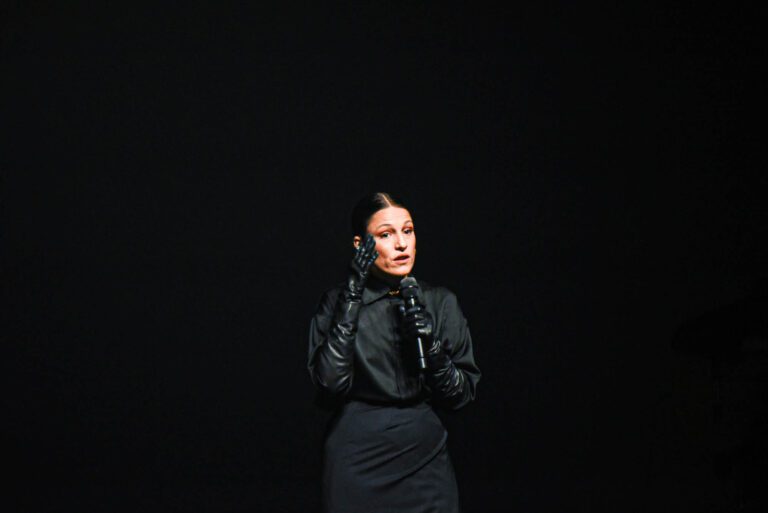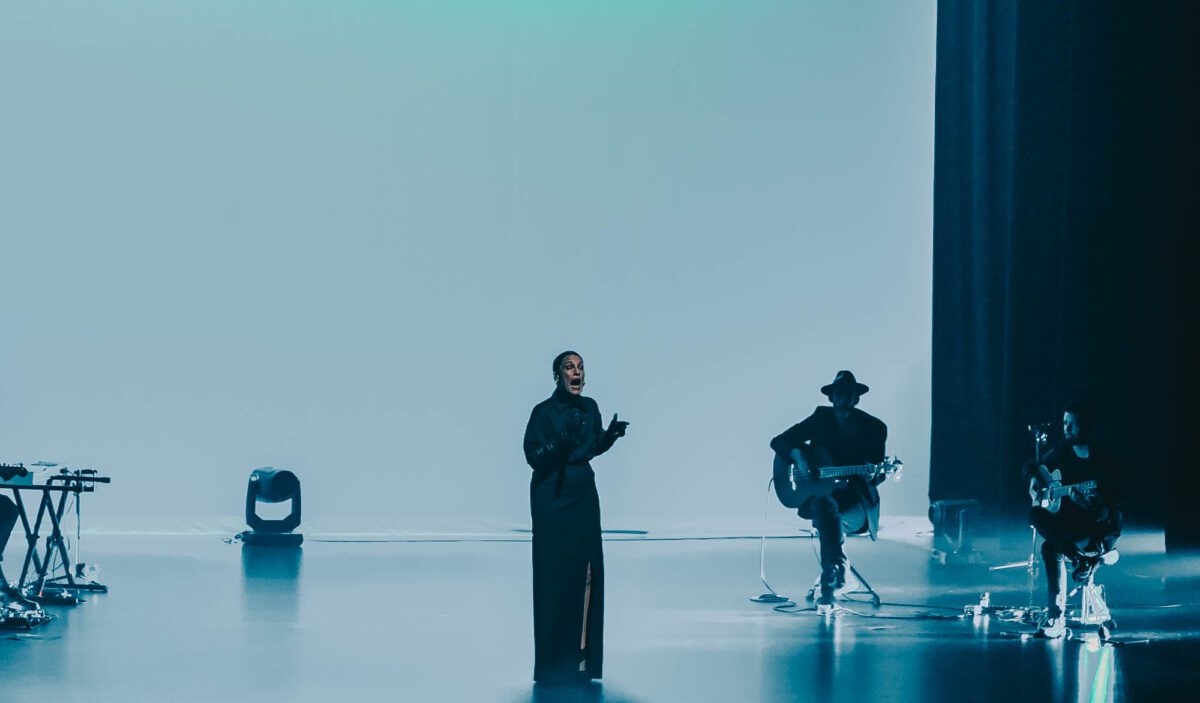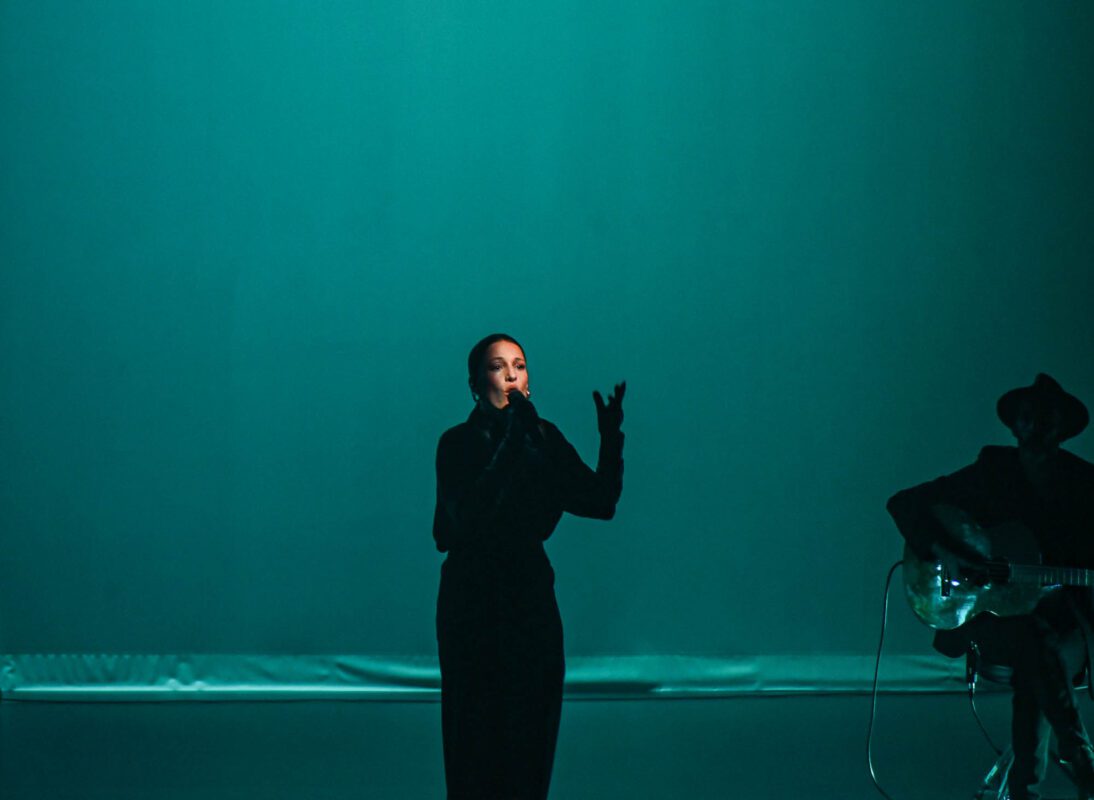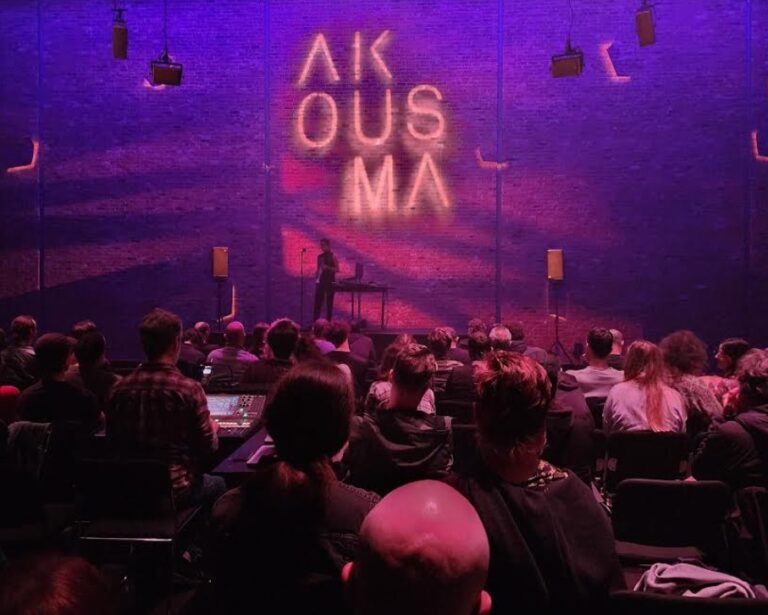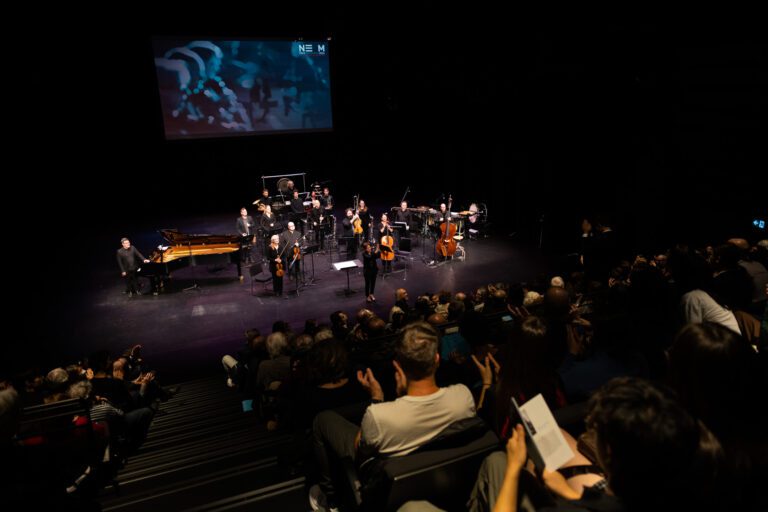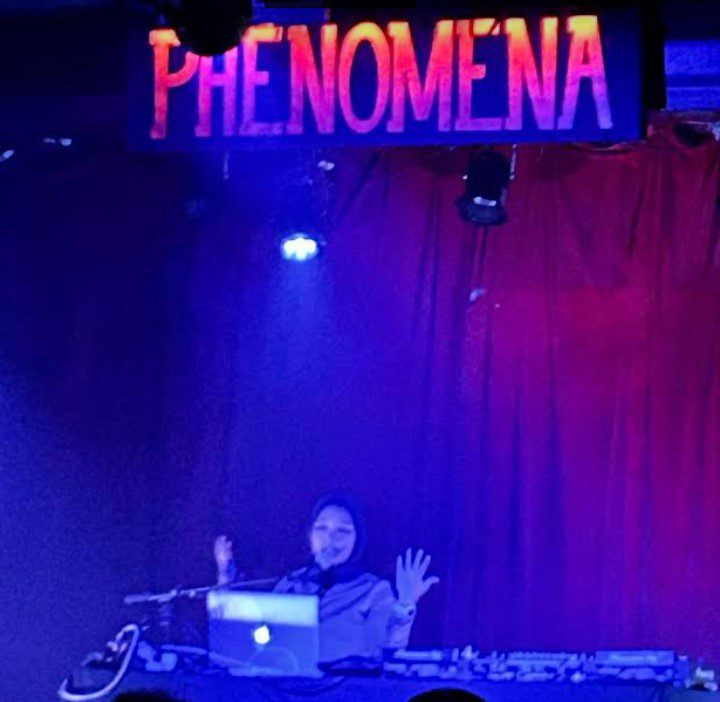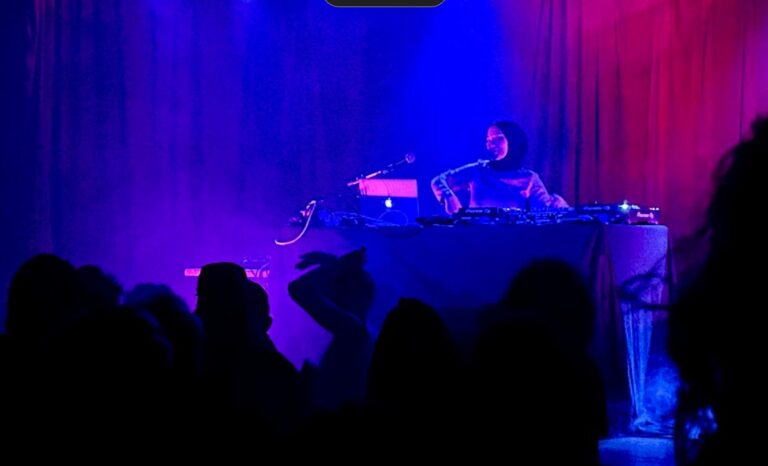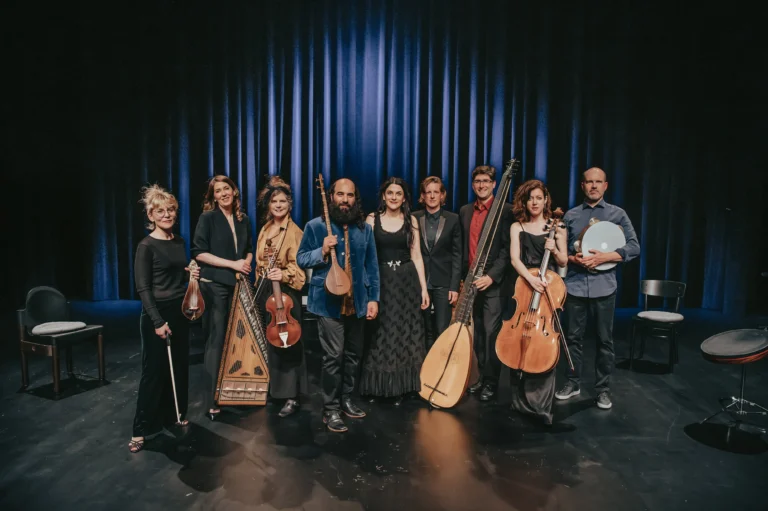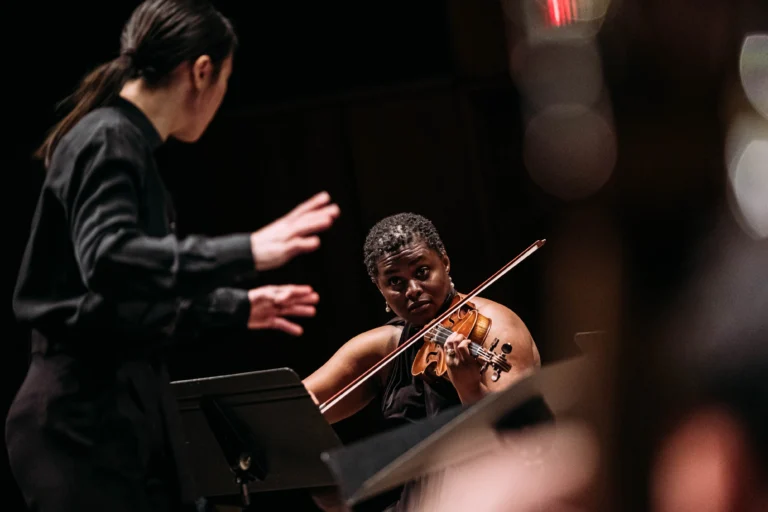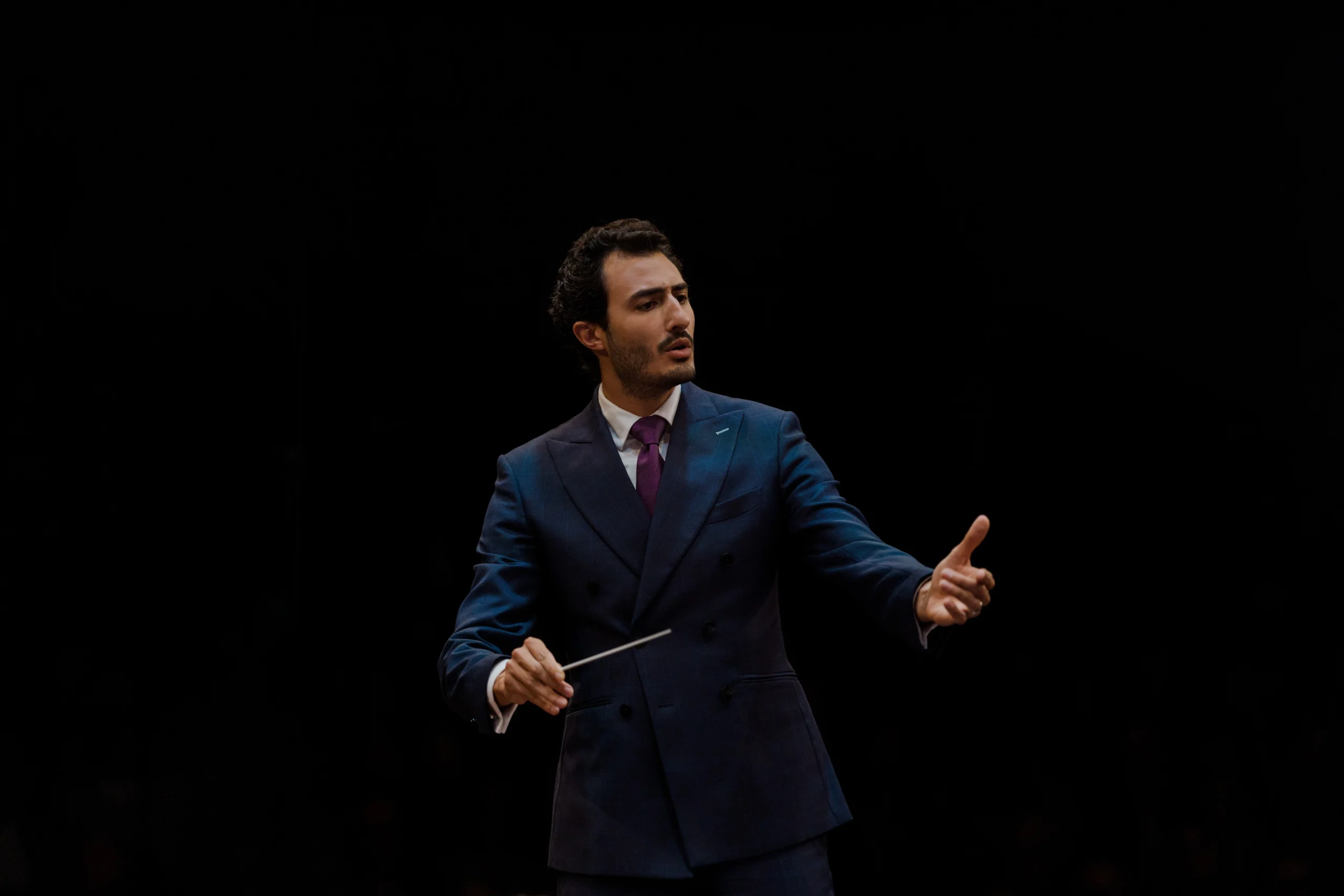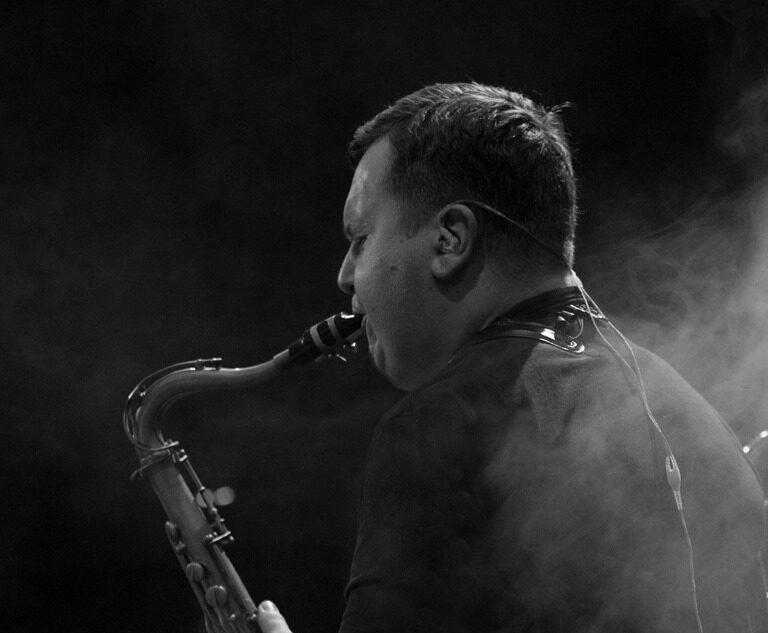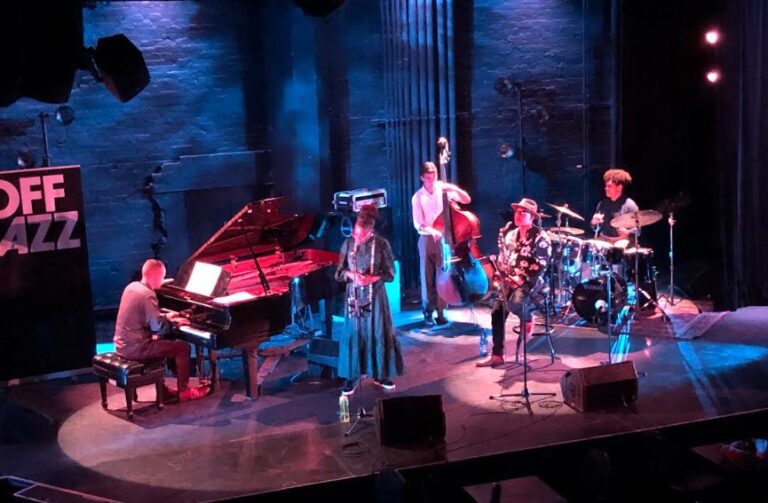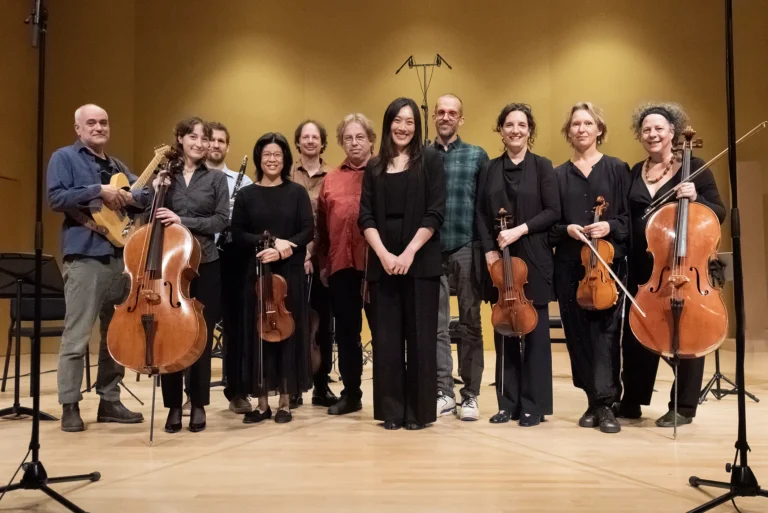Is it possible to enter sound? That’s the question electroacoustic music seems intent on answering. Surrounded by the thirty loudspeakers of the acousmonium installed at Usine C, we had the impression of being enveloped in sound in motion.
To open its 19th edition, the Akousma festival offered a diverse range of works skilfully crafted using a variety of technological processes. With 7 decades of development behind it, this classic of electro music is no stranger to renewal. Yesterday, we could hear the most academic to the most secular aesthetics. Apart from the two performances, there was absolutely nothing to see, but plenty to hear. Everything was fixed in place, as if you were going to see a film with no image, but bouncing with action.
Francis Dhomont
At 96, Francis Dhomont has literally written the history of electroacoustics. In fact, his piece Somme toute acted as a ‘best of’ of his career. It was broadcast by Louis Dufort, Dhomont’s former student and artistic director of Akousma, who didn’t miss the opportunity to underline the French composer’s enormous influence. Circling noises, bounces, rolling objects and unpredictable articulations: all the key elements of a landmark concrete work were there. Although produced according to the rules of the art – rules partly written by Dhomont himself – the piece perhaps had the defect of its qualities. All in all, it was a very academic presentation, in which the retrospective aspect of the work could be perceived as jumping from one cock to another. Nevertheless, hearing a new piece by Francis Dhomont is always a pleasure, as well as a real privilege.
Julie Delisle
Is Pipa Aura Suichi a title heralding the use of the Chinese pipa? You’d think so. Yet it’s a sound bank uniquely conceived of composer Jean-François Laporte’s invented instruments that is the source of this work by Montreal composer and flutist Julie Delisle. Completely acousmatic, this piece hid its game well. It featured a variety of crackling sounds, which at times sounded wet, like a boiling movement. There was a marked use of sound treatments, often camouflaging the nature of the sounds used. Although the whole developed according to a relatively conventional structure and phrasing, the piece nevertheless had a depth of field created by its different textural layers evolving concomitantly.
Mourad Bncr
What will the earth’s environment sound like when there are no more humans? One thing is certain, no one will be there to hear it. That doesn’t mean, however, that our world will be all silence. In Le monde après nous, multimedia artist Mourad Bncr imagines such a soundscape. As soon as he took the stage, the room immediately fell into a gloomy atmosphere, where the music slowly evolved into an aesthetic at the crossroads of drone, dark ambient and glitch. Apart from the artist’s presence as well as the distant inclusion of a hushed North African flute melody, Bncr’s music was a disembodied affair, subtracting the anthropocene from the portrait to leave breathing music behind. Subtle articulations had all the space needed for their movement to be fully felt by the audience. Very different from the other proposals, Le monde après nous was a highlight of the evening.
Guillaume Côté
With Guillaume Côté, we were venturing into territories once proscribed by the academic teaching of electroacoustics. Discrete Stream of Light was a long twenty-minute piece, structured with a handful of long rises in intensity, juxtaposed one after the other. During one of these movements, we were bathed in a superposition of consonant arpeggios echoing the great principles of minimalist aesthetics. There was then a gradual densification of sound strata, culminating in a peak and a brief fall. A new wave could then begin. Harmonically, the whole was very static. There was no deviation from the major mode in the choice of notes. What’s more, most of the material used seemed to consist of synthesized sounds. If the impression was far from that of innovative and surprising content, the familiarity of the musical result made Discrete Stream of Light a highly satisfying work in terms of affect. If there was a moment of aural bonbon at Akousma last night, it was definitely this one.
Roxanne Melissa Guerra-Lacasse
There’s sometimes a gap between the artists’ thematic inspirations and the perception we might have of the final works. In La Berceuse de la veuve by Roxanne Melissa Guerra-Lacasse, it’s love that should be the creative driving force. Yet it’s not easy to spot a concept so vague yet so omnipresent in art. The same applies to the play of the same name that inspired the work. What we could hear, however, was a very well put-together acousmatic piece, in which a variety of more or less identifiable sound sources woo and dance a round above our heads. The piece is loosely narrative, and the articulations are gradual. There’s a story being told through this rather ambient framework and its inverted sounds, but we don’t know what it is. The relationship with theater is certainly interesting, and we can expect this contribution to bear fruit in the long term in Guerra-Lacasse’s music. An artist whose work will be worth keeping an eye on.
Rocío Cano Valiño
The same applies to the work of Argentine composer Rocío Cano Valiño, whose two works presented at Akousma (Astérion; Okno) were based on stories by Jeorge Luis Borgès and Silvina Ocampo respectively. In Asterion, I couldn’t find either a labyrinth or a Minotaur. However, I did hear music that was totally engaging. In both pieces, the articulations were such that attention was held from beginning to end. Squeaks, rattles and rattling effects abounded, and every second was densely packed with sonic information. The saturation of sounds over-stimulated hearing, provoking both pleasure and tickling the ear. A monumental amount of micromontage was required to compose these constantly moving works. The aesthetics were consistent from one piece to the next, and the technical precision was remarkable. These broadcasts by Valiño were the highlights of the event.
Sarah Belle Reid
With Sarah Belle Reid, the trumpet was put in all its states. The Canadian composer was the only one to present a mixed work, Manifold fortrumpet and electronics. This 25-minute performance featured the composer herself, playing her instrument in a highly unorthodox manner. For most of the composition, the trumpet was used as an amplifier for Reid’s breath, which was then picked up by a microphone that interacted with the computer device in place. Thus, with various breathing effects and mouth noises, the composer used her instrument both as a sound source and as a controller. She also manipulated certain digital parameters via potentiometers, even leaving her trumpet aside to devote herself to her machines for a brief moment. Towards the end of the piece, a few brassy notes could be heard, intervening somewhat like a deliverance resolving a long moment of tension. But for the rest, the music was frantic, with the flow of the trumpet interventions in total, but controlled, chaos. The interplay between human and machine was spectacular, and this work concluded the evening on a high note.
